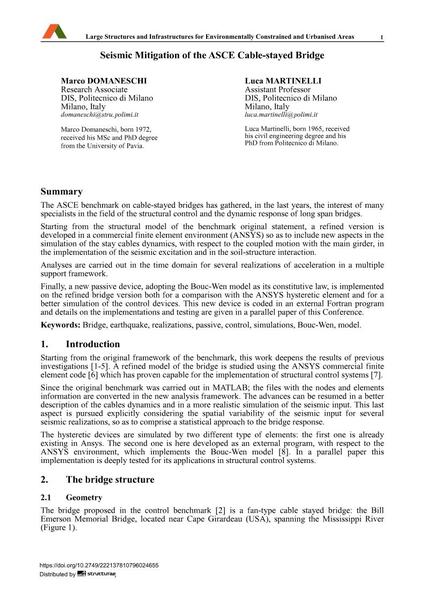Seismic Mitigation of the ASCE Cable-stayed Bridge

|
|
|||||||||||
Détails bibliographiques
| Auteur(s): |
Marco Domaneschi
Luca Martinelli |
||||
|---|---|---|---|---|---|
| Médium: | papier de conférence | ||||
| Langue(s): | anglais | ||||
| Conférence: | IABSE Symposium: Large Structures and Infrastructures for Environmentally Constrained and Urbanised Areas, Venice, Italy, 22-24 September 2010 | ||||
| Publié dans: | IABSE Symposium Venice 2010 | ||||
|
|||||
| Page(s): | 298-299 | ||||
| Nombre total de pages (du PDF): | 8 | ||||
| Année: | 2010 | ||||
| DOI: | 10.2749/222137810796024655 | ||||
| Abstrait: |
The ASCE benchmark on cable-stayed bridges has gathered, in the last years, the interest of many specialists in the field of the structural control and the dynamic response of long span bridges. Starting from the structural model of the benchmark original statement, a refined version is developed in a commercial finite element environment (ANSYS) so as to include new aspects in the simulation of the stay cables dynamics, with respect to the coupled motion with the main girder, in the implementation of the seismic excitation and in the soil-structure interaction. Analyses are carried out in the time domain for several realizations of acceleration in a multiple support framework. Finally, a new passive device, adopting the Bouc-Wen model as its constitutive law, is implemented on the refined bridge version both for a comparison with the ANSYS hysteretic element and for a better simulation of the control devices. This new device is coded in an external Fortran program and details on the implementations and testing are given in a parallel paper of this Conference. |
||||
| Mots-clé: |
pont tremblement de terre modèle
|
||||

